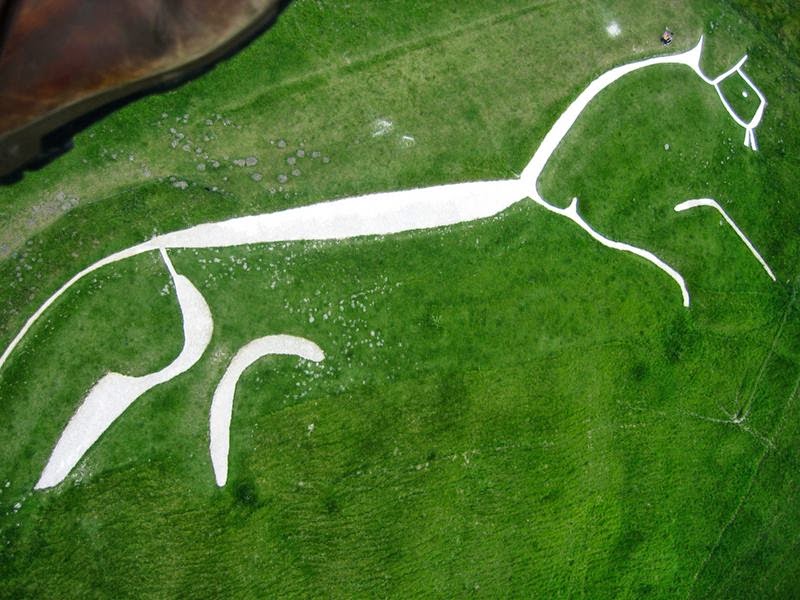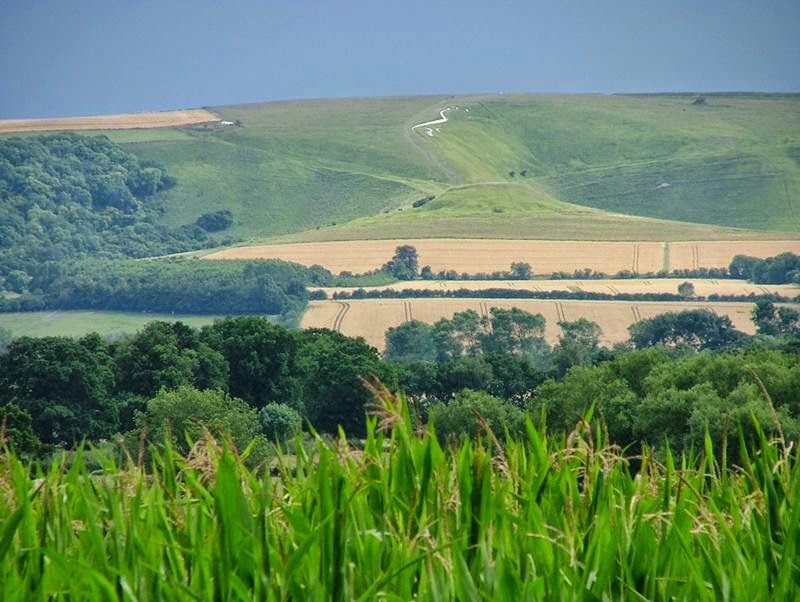Everyone knows or has heard of the Nazca Lines, ancient geoglyphs found in Peru. They are hundreds of huge figures traced by the ancient culture of the same name on the ground, and that can only be fully contemplated from the air.
But perhaps what many do not know is that there is also something similar in Europe. Specifically in the United Kingdom, there are what are called hill figures. They are not very numerous but they are old, one of them from prehistoric times and the rest of those that survive from a few centuries ago. And like the Nazca Lines, not much is known about them. Neither what they mean nor who made them.
 |
| Uffington white horse |
Uffington white horse
The Uffington White Horse is a highly stylized prehistoric hill figure, 110 meters long, formed from deep trenches filled with crushed white chalk. The figure is situated on the upper slopes of White Horse Hill in the English civil parish of Uffington (in the county of Oxfordshire, historically Berkshire), some 8 km south of the town of Faringdon and a similar distance west of the town of Wantage; or 2.5 km south of Uffington. The hill forms a part of the scarp of the Berkshire Downs and overlooks the Vale of White Uffington horse to the north. Best views of the figure are obtained from the air, or from directly across the Vale, particularly around the villages of Great Coxwell, Longcot, and Fernham. The site is owned and managed by the National Trust and is a Scheduled Ancient Monument.
White horse England
The figure presumably dates to "the later prehistory", i.e. the Iron Age (800 BC-AD 100) or the late Bronze Age (1000–700 BC). This view was generally held by scholars even before the 1990s, based on the similarity of the horse's design to comparable figures in Celtic art, and it was confirmed following a 1990 excavation led by Simon Palmer and David Miles of the Oxford Archaeological Unit, following which deposits of fine silt removed from the horse's 'beak' were scientifically dated to the Late Bronze Age.
 |
| White horse England |
Iron Age coins that bear a representation comparable to the Uffington White Horse have been found, supporting the early dating of this artifact; it has also been suggested that the horse had been fashioned in the Anglo-Saxon period, more particularly during Alfred's reign, but there is no positive evidence to support this and the view is classified as "folklore" by Darvill (1996). Numerous other prominent prehistoric sites are located nearby, notably Wayland's Smithy, a long barrow less than 2 kilometers (1 mi) to the west. The Uffington is by far the oldest of the white horse figures in Britain and is of an entirely different design from the others. It has long been debated whether the chalk figure was intended to represent a horse or some other animal. However, it has been called a horse since the 11th century at least. A cartulary of Abingdon Abbey, compiled between 1072 and 1084, refers to "mons albi equi" at Uffington ("the White Horse Hill"). [Source]
 |
| White horse hill |
Image credit Dave Price
 |
| Uffington horse |
Image credit Giles Watson
 |
| The white horse at Uffington |
Image credit Robert
 |
| The white horse, Uffington |
Image credit maxley
 |
| White horse Uffington |
Image credit Dave Price
 |
| The white horse of Uffington |
Image credit Paul Chapman
 |
| The white horse Uffington |
Image credit jackiesjottings
 |
| White horse the UK |
Image credit Sharmanka Kinetic Theatre
White Horse of Uffington, England | Video
where is the white horse on the hill
Uffington White Horse Google Map
 |
| Chalk white horse |
Image credit T.J. Morton
Source — Wikipedia

No comments:
Post a Comment